#leopold of belgium
Explore tagged Tumblr posts
Text
483 notes
·
View notes
Text
2019 killing off the leopold goons by MARCELLOUSLOVELACE #raygun81 #75dab #biko70 #blackart #congo #rubbertrees #leopoldbelgium #marcellouslovelace
2019 killing off the leopold goons by MARCELLOUSLOVELACE “killing of belgium leopold evil” #marcellouslovelace #raygun81 #congo #biko70

View On WordPress
#2017 black art#2017BLACKART#75DAB#Africa#African Art#BIKO 70#biko70#Black art#BLACK ARTIST#blackartnews#congo#INFINITO 2017#leopold of belgium#Marcellous Lovelace#Marcellous Lovelace Art#RAYGUN81#rubber trees#sudan
6 notes
·
View notes
Text
"The most fashionable bathing station in all Europe". British industrialists and American mining investors plotting the colonization of the Congo, while mingling at Ostend's seaside vacation resorts. Extracting African life to build European railways, hotels, palaces, suburbs, and other modern(ist) infrastructure. "Towards infinity!"
---
In 1885, King Leopold II achieved an astonishing and improbable goal: he claimed a vast new realm of his own devising, a conjury on a map called [...] the Congo Free State. [...] [A] fictional state owned by the king, ruled by decree, and run from Brussels from 1885 to 1908. [...] This was [...] a private entrepreneurial venture [for the king]. The abundance of ivory, timber, and wild rubber found in this enormous territory brought sudden and spectacular profits to Belgium, the king, and a web of interlocking concession companies. The frenzy to amass these precious resources unleashed a regime of forced labor, violence [millions of deaths], and unchecked atrocities for Congolese people. These same two and a half decades of contact with the Congo Free State remade Belgium [...] into a global powerhouse, vitalized by an economic boom, architectural burst, and imperial surge.
Congo profits supplied King Leopold II with funds for a series of monumental building projects [...]. Indeed, Belgian Art Nouveau exploded after 1895, created from Congolese raw materials and inspired by Congolese motifs. Contemporaries called it “Style Congo,” [...]. The inventory of this royal architecture is astonishing [...]. [H]istorical research [...] recovers Leopold’s formative ideas of architecture as power, his unrelenting efforts to implement them [...]. King Leopold II harbored lifelong ambitions to “embellish” and beautify the nation [...]. [W]ith his personal treasury flush with Congo revenue, [...] Leopold - now the Roi Batisseur ("Builder King") he long aimed to be - planned renovations explicitly designed to outdo Louis XIV's Versailles. Enormous greenhouses contained flora from every corner of the globe, with a dedicated soaring structure completed specifically to house the oversize palms of the Congolese jungles. [...]
---
The Tervuren Congo palace [...]. Electric tramways were built and a wide swath of avenue emerged. [...] [In and around Brussels] real estate developers began to break up lots [...] for suburban mansions and gardens. Between 1902 and 1910, new neighborhoods with luxury homes appeared along the Avenue [...]. By 1892, Antwerp was not only the port of call for trade but also the headquarters of the most profitable of an interlinking set of banks and Congo investment companies [...]. As Antwerp in the 1890s became once again the “Queen of the Scheldt,” the city was also the home of what was referred to as the “Queen of Congo companies.” This was the ABIR, or Anglo-Belgian India Rubber Company, founded in 1892 with funds from British businessman “Colonel” John Thomas North [...].
Set on the seaside coast, Belgium’s Ostend was the third imperial cityscape to be remade by King Leopold [...] [in a] transformation [that] was concentrated between 1899 and 1905 [...]. Ostend encompassed a boomtown not of harbor and trade, like Antwerp, but of beachfront and leisure [...] [developed] as a "British-style" seaside resort. [...] Leopold [...] [w]as said to spend "as much time in Ostend as he did in Brussels," [...]. Ostend underwent a dramatic population expansion in a short period, tripling its inhabitants from 1870–1900. [...] Networks of steamers, trams, and railway lines coordinated to bring seasonal visitors in, and hotels and paved walkways were completed. [...] [A]nd Leopold’s favorite spot, the 1883 state-of-the-art racetracks, the Wellington Hippodrome. Referred to with an eye-wink as “the king incognito” (generating an entire genre of photography), visitors to the seaside could often see Leopold in his top hat and summer suit [...], riding his customized three-wheeled bicycle [...]. By 1900, Ostend’s expansion and enhancement made it known as “the Queen of the Belgian seaside resorts” and “the most fashionable bathing station in all Europe.” Opulence, convenience, and spectacle brought the Shah of Persia, American tycoons, European aristocrats, and Belgian elites, among others, to Ostend.
---
Leopold’s interventions and the Congo Free State personnel and proceeds played three pivotal and understudied roles in this transformation, all of which involved ABIR [British industrialists].
First, it was at Ostend that an early and decisive action was taken to structure the “red rubber” regime and set it in motion. In 1892, jurists such as [E.P.] had ruled, contravening [...] trade laws, that the king was entitled to claim the Congo as his domanial property [...]. Leopold [...] devised one part of that royal domain as a zone for private company concessions [...] to extract and export wild rubber.
Soon after, in 1892, King Leopold happened to meet the British “Colonel” John Thomas North at the Ostend Hippodrome. North, a Leeds-born mechanic [...] had made a fortune speculating on Chilean nitrates in the 1880s. He owned monopoly shares in nitrate mines and quickly expanded to acquire monopolies in Chilean freight railways, water supplies, and iron and coal mines. By 1890 North was a high-society socialite worth millions [...]. Leopold approached North at the Ostend racecourse to provide the initial investments to set up the Anglo-Belgian India Rubber Company (ABIR). [...]
---
One visible sign of Ostend’s little-known character as Congo boomtown was the Royal Palace Hotel, a lavish property next to the king’s Royal Domain, which opened in 1899. With hundreds of rooms and a broad sweep of acreage along the beachfront, the palace “occupied the largest space of any hotel in Europe.” [...]
King Leopold met American mining magnate Thomas Walsh there, and as with North, the meeting proved beneficial for his Congo enterprise: Leopold enlisted Walsh to provide assessments of some of his own Congo mining prospects. The hotel was part of [...] [a major European association of leisure profiteers] founded in 1894, that began to bundle luxury tourism and dedicated railway travel, and whose major investors were King Leopold, Colonel North [...].
At the height of Congo expansionism, fin-de-siècle Antwerp embodied an exhilarated launch point [...]. Explorers and expeditioners set sail for Matadi after 1887 with the rallying call “Vers l’infini!” (“towards infinity!”) [...].
---
Text above by: Debora Silverman. "Empire as Architecture: Monumental Cities the Congo Built in Belgium". e-flux Architecture (Appropriations series). May 2024. At: e-flux.com/architecture/appropriations/608151/empire-as-architecture-monumental-cities-the-congo-built-in-belgium/ [Bold emphasis and some paragraph breaks/contractions added by me. Italicized first paragraph/heading in this post was added by me. Presented here for commentary, teaching, criticism.]
#tidalectics#ecology#multispecies#abolition#this full article has far more info about leopolds obsession with opulence and all the many infrastructure projects in belgium he sponsored#full article also expands more on congolese art and anticolonial art projects that criticize belgian architecture#eflux did several articles focusing on anticolonial responses to belgian extraction and art noveau and modernist architecture#including a piece on spectacle of belgian worlds fair and human zoos#silverman has very extensive research history#ecologies#geographic imaginaries
132 notes
·
View notes
Text

I FORGOT I DREW THIS AHAHAHHA Clone High Leopold I of Belgium doing the hands thing 😭😭😭
29 notes
·
View notes
Text

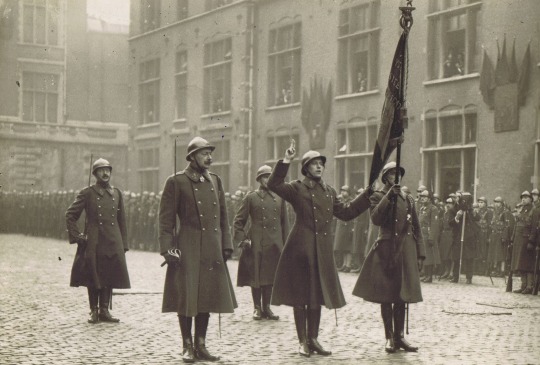

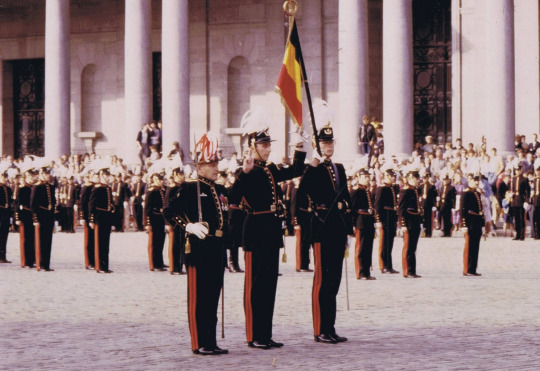

Prince Albert (King Albert I) | 17/12/1892 Prince Léopold (Koning Leopold III) | 09/01/1923 Prince Albert (King Albert II) | 18/05/1953 Prince Philippe (King Philippe) | 26/09/1980 Princess Elisabeth | 26/09/2013
75 notes
·
View notes
Text
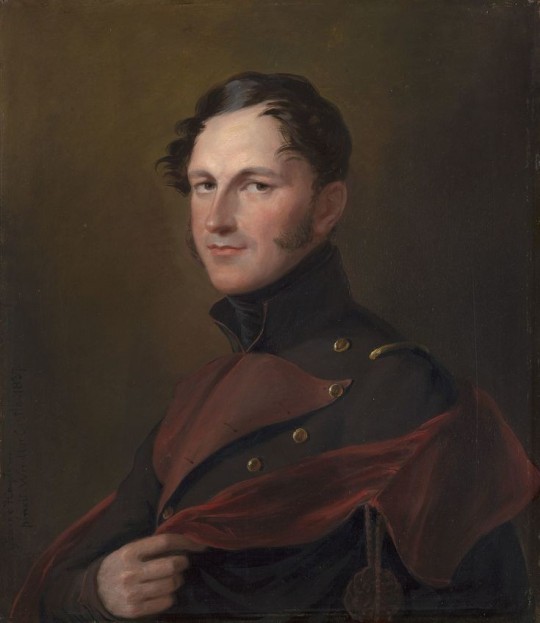
King Leopold I of the Belgians. By George Hayter.
47 notes
·
View notes
Text
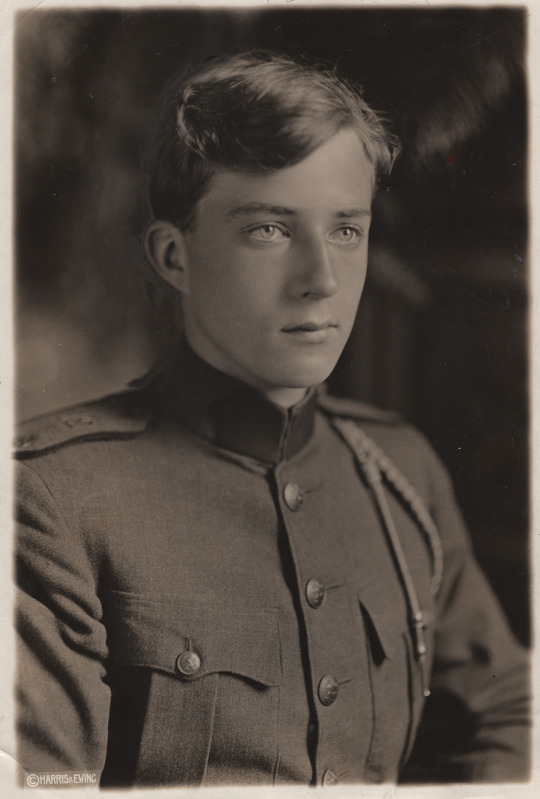
OTMAA Contemporaries: Crown Prince Leopold of Belgium, 1919.
36 notes
·
View notes
Text

Funeral of Leopold I of Belgium
Belgian vintage postcard
#postal#historic#ansichtskarte#sepia#vintage#tarjeta#leopold#briefkaart#photo#funeral#postkaart#belgium#ephemera#postcard#postkarte#photography#belgian#carte postale
7 notes
·
View notes
Text
Hey. It's @reaux07. If you remember my last angry history rant on Paul Robeson, I'm back for Part 2. This time? King Leopold II and his relationship to the Congo. I just finished writing a 5-page, single-spaced essay on this for class, so I'll do my best to summarize in bullet points this time rather than chunky paragraphs. This will still be long though, as a warning, but it's a necessary read. Please let me get through this, because y'all know this hurts to write.
Trigger warnings for... just about everything typically associated with mass colonization (e.g. rape, murder, torture, etc.). Tiktok below as a brief introduction first:
King Leopold II of Belgium, due to his personal unpopularity and lack of love from his parents, had low self-esteem. As his father had already made 50 attempts to colonize foreign lands to no avail, Leopold felt the only way to uplift both himself and his country was to take take control of his own colony.
He checked Sarawak, the New Hebrides, the Fiji Islands, and the Philippines. Nothing. But what was left? The Congo.
How did he learn of the Congo? Leopold hired Henry Morton Stanley, a famous Welsh explorer of the time, to cross Africa from east to west, walking and canoeing 7,000 miles.
Upon the Congo's discovery, Leopold turned his palace into a luxury hotel for the delegates of a new conference to discuss Africa's colonization, supervising every detail. He successfully lied to the major powers of Europe, making claims of charitable and philanthropic aims, and that there would be free trade amongst the African colonies. (And yes, he did give every single attendee a painting of his face... Because he could.)
Meanwhile, back in the Congo, Stanley (the explorer I just mentioned) used bribes and trickery to provide official treaties with the various chiefs of the land in case Leopold ever needed legal proof of land ownership. (Ex of said trickery: One report noted that a village assumed "the white man controlled the sun.")
In 1891 and 1892, Leopold released decrees stating that both vacant land and produce of the forests exclusively belonged to Belgium and that natives could only harvest for the state.
Enforcing Leopold’s rule were 16,000 Africans equipped with modern Belgian-made automatic rifles.
Outing Attempt #1: One African American man, George Washington Williams, during his trip compiled a report to be sent to the American secretary of state. In this letter, Williams remembers bets being taken on who could shoot the native people in the head first, among other instances of vile treatment. While the document never made it back to Williams’ home country, it was eventually found in Europe where he later died.
By this point, the Congo was actually ruining Leopold’s finances and he was growing desperate. But to his surprise, he happened to pick the one spot where rubber grew in abundance, just as the demand for cars and bicycles rose internationally, John Dunlop, a Scottish veteran, having just invented the first pneumatic tire.
Because of this, rubber-prominent areas were the targets of mass exploitation and punishment if daily and weekly rubber quotas were not met.
Missionaries began to write not just to one another, but back home in disgust of these aforementioned “punishments,” one man’s writings put in missionary magazines and national newspapers in Europe. These punishments included rape, tying people up to trees, cutting off men's heads and genitals to be displayed along the fences of Congolese villages, cutting women’s breasts off, and most notably...
Attempt #2: The world, if only momentarily, saw BASKETS after BASKETS of right hands that had been cut off as proof that each of the cartridges given to the Africans had been fired and killed one of their own people. These hands were then smoked for preservation and brought back to their officers.
What did Leopold do once this information came out alongside photos of child mutilation? Acknowledge the abuses and moved on almost immediately.
In Europe, the rubber was processed in a city called Antwerp, ironically named after a mythological giant who also cut off hands. To this day, the connection between such a name and Belgian history has not been made by the general public as countless documents by the Belgian Ministry of Foreign Affairs are kept secret to maintain an image of untouched royalty.
One commissioner in charge of a district in Congo, Leon Fievez, produced one ton of rubber a day, boasting of 1,000 people killed, 162 villages destroyed, burning gardens and plantations so people would starve, and having “only” used 3,000 cartridges. He was nicknamed the “Devil of the Equator” and rightly so.
Attempt #3: One day, a man named Charles Stokes, a British trader working for the Germans, entered the picture. Stokes was arrested for trading in state territory, despite those former claims of free trade, and sentenced to death. Leopold was forced to pay compensation to both Britain and Germany for his death, both countries now increasingly aware of the Congo’s dark reality.
To cover it up, Leopold made claims of the Congo opening up to new companies. Let's be real: His men were on the boards of all these new companies and he took 50% of the profits.
In particular were these "concession companies" where the "hostage system" was set up. Agencies, with official hostage licenses authorizing such, would take the wives of rubber collectors for up to 15 days until the quota was met.
On the 15th day, the men of the Congo either got their wives back or faced further punishment, often death. For the agents, the 15th day meant it was time to calculate commissions, and for the king? It was proof that this new hostage system worked.
These abusive concession companies lasted over 10 years until formal competition arose in South America and Asia.
Attempt #4: Then came Edmund Dene Morel, a half-French, self-taught shipping clerk turned investigative journalist who wrote in The Speaker of the abuses faced by the Congolese, backed up by evidence, not just speculations.
Due to Morel’s growing specialization in West African affairs, he was able to not only send out 15,000 brochures and 3,700 letters in six months after his move to Wales, but start his own newspaper, West African Mail.
By 1903, Roger Casement, an ally to Morel’s cause, spent two months traveling the upper Congo, recording African testimonies. He, too, realized that missionaries were key witnesses and went to visit Joseph Clark (a missionary of 20 years) for 17 days.
Through these reports, which grew to 50 pages in length, Casement and Morel were able to solidify Belgium as perpetuating the worst colonial system Africa had ever known. Punishments included Africans performing public incest for the colonists' entertainment, decapitation, women being stabbed with wooden spikes up their vaginas, and one woman tied up to a tree and slashed straight in half from her left shoulder through her abdomen and out the other side.
The West African Mail even reported on a part of Congo no one knew existed, private property within private property called the “Crown Domain” on the other side of Lake Tumba, which gained 231 million euros alone, all sent directly to King Leopold II. Crown Domain was 10x 5)3 size of Belgium.
Founded by Morel, Liverpool became the headquarters of a coalition called the Congo Reform Association. He also published a book called Red Rubber (1906). I think you’ll find the cover particularly striking! Check out the hand in the bottom right corner being weighed against King Leopold II on the left.
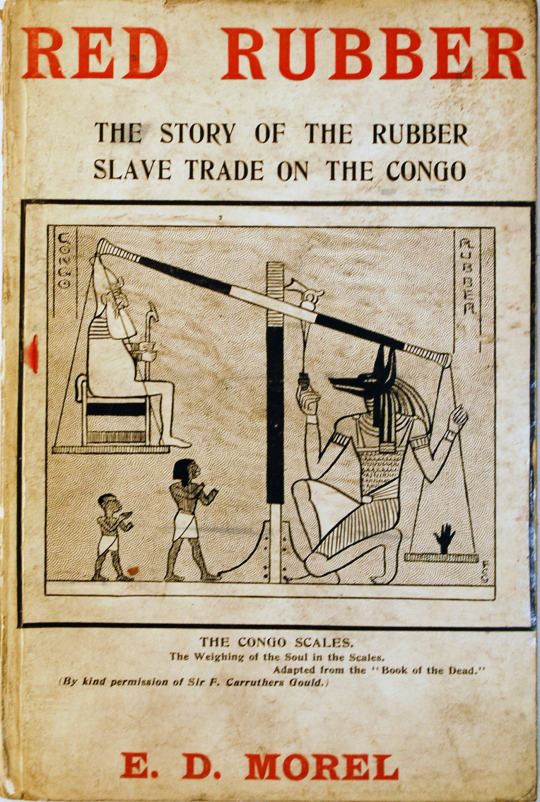
Leopold obviously not having this, commissioned a number of books and monthly magazines to clear up the mess. This didn't work. Obviously.
He even tried to send his own international commission to control what the Congolese said in 1904, to no avail. This was due to a missionary named John Harris who had taken the accounts of various people in the area and sent them back to Morel.
In one particularly heartbreaking moment, a chief brought to Leopold’s judges 110 twigs for each of the entire villages, not just people, killed by the Belgian state, naming every last one.
By the time they returned to Europe, the governor-general committed suicide and, upon being asked, Harris suggested Leopold should be sent to the gallows by the relatively new International Court of Justice.
The commission's report vindicated Casement and Morel. Leopold had tricked no one. EVERYONE in Belgium was calling him out.
Leopold ordered all of the Congo State Records to be burned.
In 1908, the Congo became a Belgian colony, not longer Leopold’s personal property. The state still made claims of "civilizing" the Africans after Leopold's death though, utilizing the leftover mineral exploitation industry with no guilt.
At least during his funeral, which he was denied of having privately, the entire city booed his body <3 well deserved. By this point, he had become Europe’s most hated man of the time.
And in case you were wondering, Casement and Morel were both accused to pro-German sympathies during WWI and executed.
I would like to add more detail but I think I’ve hit a character limit. Just know that Congo’s population was cut in HALF, in some places as much as 60-90%. Villages after villages were burned, as shown through so many soldiers’ and missionaries’ journals. This was a genocide of over 10 MILLION PEOPLE y’all. Hearing this story was truly SICKENING, but here’s the BBC 4 documentary we watched for class for more: Congo: White King, Red Rubber, and Black Death.
What truly gets me is just how OTHER colonizers were calling this man out after finding out the full truth… For me, that feels like extra proof of how truly messed up this was if THEY were disturbed too.
And what feels truly insidious was how Leopold made sure to institutionalize all of his wrongdoings and was so… obviously knowing about every wrongdoing, I mean writing in letters to make sure no one else found out. Please…
Linking my angry history rant on Paul Robeson from last semester here.
Happy Black History Month.
#belgium#king leopold ii#democratic republic of congo#history#black history month#colonialism#tw genocide#tw rape#tw torture#tw massacre#the congo#tw incest#resources#bipoc#undescribed#reaux speaks#black lives matter
201 notes
·
View notes
Text
The King of the Belgians to Queen Victoria.
LAEKEN, 21st May 1845.
MY DEAREST AND MOST BELOVED VICTORIA, - Receive my sincerest and most heartfelt good wishes on the happy reappearance of your birthday. I need not dwell on my sentiments of devotion to you; they began with your life, and will only end with mine. The only claim I make is to be remembered with some little affection. Thank heaven, I have little to wish you, than that your present happiness may not be disturbed, and that those who are dear to you may be preserved for your happiness.
My gift is Charlotte's portrait. The face is extremely like, and the likest that exists; the hair is a little too fair, it had become also darker. I take this opportunity to repeat that Charlotte was a noble-minded and highly gifted creature.
She was nervous, as all the family have been; she could be violent, but then she was full of repentance for it, and her disposition highly generous and susceptible of great devotion. I am the more bound to say this, as I understood that you had some notion that she had been very imperious, and not mistress of her temper. Before her marriage some people by dint of flattery had tried to give her masculine tastes; and in short had pushed her to become one day a sort of Queen Elizabeth. These sentiments were already a little modified before her marriage. But she was particularly determined to be a good and obedient wife; some of her friends were anxious she should not, amongst these Madame de Flahaut must be mentioned en premiere ligne. This became even a subject which severed the intimacy between them. Madame de Flahaut, much older than Charlotte, and of a sour and determined character, had gained an influence which partook on Charlotte's part a little of fear. She was afraid of her, but when once supported took courage.
People were much struck on the 2nd of May 1816 at Carlton House with the clearness and firmness with which she pronounced "and obey" etc., as there had been a general belief that it would be for the husband to give these promises. The Regent put me particularly on my guard, and said, "If you don't resist she will govern you with a high hand." Your own experience has convinced you that real affection changes many sentiments that may have been implanted into the mind of a young girl. With Charlotte it was the more meritorious, as from a very early period of her life she was considered as the heiress of the Crown; the Whigs flattered her extremely, and later, when she got by my intervention reconciled to the Tories, they also made great efforts to please her.
Her understanding was extremely good; she knew everybody, and I even afterwards found her judgment generally extremely correct. She had read a great deal and knew well what she had read. Generous she was almost too much, and her devotion was quite affecting, from a character so much pushed to be selfish and imperious.
I will here end my souvenir of poor dear Charlotte, but I thought that the subject could not but be interesting to you. Her constancy in wishing to marry me, which she maintained under difficulties of every description, has been the foundation of all that touched the family afterwards. You know, I believe, that your poor father was the chief promoter, though also the Yorks were; but our correspondence from 1814 till 1816 was entirely carried on through his kind intervention; it would otherwise have been impossible, as she was really treated as a sort of prisoner. Grant always to that good and generous Charlotte, who sleeps already with her beautiful little boy so long, where all will go to, an affectionate remembrance, and believe me she deserves it.
Forgive my long letter, and see in it, what it really is, a token of the great affection I have for you. Ever, my dearest Victoria, your devoted Uncle,
LEOPOLD R
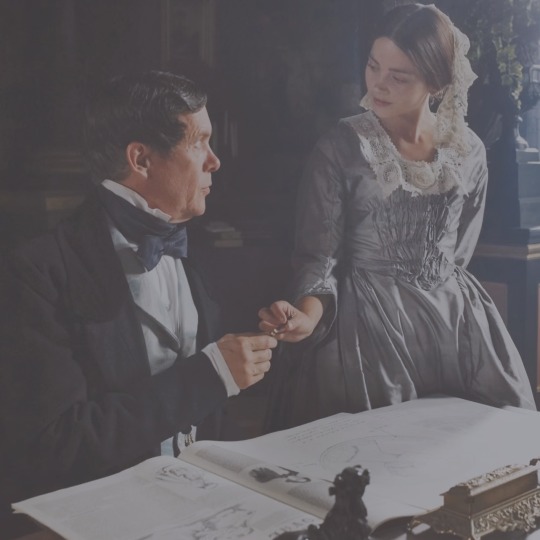

#history#queen victoria#leopold i of belgium#Princess Charlotte Augusta of Wales#Charlotte & Leopold
7 notes
·
View notes
Text
Why, then, did the killings go on for so long? The same irrationality lies at the heart of many other mass murders. In the Soviet Union, for example, shooting or jailing political opponents at first helped the Communist Party and then Josef Stalin gain absolute power. But after there were no visible opponents left, seven million more people were executed, and many millions more died in the far-flung camps of the gulag. So many engineers were seized that factories came to a halt; so many railway men died that some trains did not run; so many colonels and generals were shot that the almost leaderless Red Army was nearly crushed by the German invasion of 1941.
In the Congo, as in Russia, mass murder had a momentum of its own. Power is tempting, and in a sense no power is greater than the ability to take someone's life. Once under way, mass killing is hard to stop; it becomes a kind of sport, like hunting. Congo annals abound in cases like that of René de Permentier, an officer in the Equator district in the late 1890s. The Africans nicknamed him Bajunu (for bas genoux, on your knees), because he always made people kneel before him. He had all the bushes and trees cut down around his house at Bokatola so that from his porch he could use passersby for target practice. If he found a leaf in a courtyard that women prisoners had swept, he ordered a dozen of them beheaded. If he found a path in the forest not well-maintained, he ordered a child killed in the nearest village.
Two Force Publique officers, Clément Brasseur and Léon Cerckel, once ordered a man hung from a palm tree by his feet while a fire was lit beneath him and he was cooked to death. Two missionaries found one post where prisoners were killed by having resin poured over their heads, then set on fire. The list is much longer.
Michael Herr, the most brilliant reporter of the Vietnam War, captures the same frenzy in the voice of one American soldier he met: "We'd rip out the hedges and burn the hooches and blow all the wells and kill every chicken, pig and cow in the whole fucking ville. I mean, if we can't shoot these people, what the fuck are we doing here?" When another American, Francis Ford Coppola, tried to put the blood lust of that war on film, where did he turn for the plot of his Apocalypse Now? To Joseph Conrad, who had seen it all, a century earlier, in the Congo.
—King Leopold’s Ghost: A Story of Greed, Terror, & Heroism in Colonial Africa
Reading this due to current events (Congo, Palestine, Ukraine, Myanmar, Azerbaijan, Xinjiang, Tigray, Manipur… nothing ever changes, does it)
#can’t tag it as genocide when it wasn’t meant as one#but worth mentioning#for blacklist sensitivity#since mass terror and mass torture aren’t exactly common tags#history#congo#belgium#russia#vietnam#america#king leopold's ghost#imperialism#communism#colonialism#capitalism#all the big -isms#torture tw#murder tw#child death tw
26 notes
·
View notes
Text
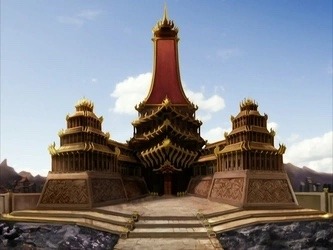





The Fire Nation has parallels to Belgium since they’re a small country and share the same national colors which is red, yellow and black. Also Fire Lord Sozin has similarities to King Leopold II since both of them committed genocide
#Avatar#avatar the last airbender#fire nation#france#belgium#fire lord#fire lord sozin#leopold ii#fire bender#19th century#victorian era
4 notes
·
View notes
Text
Sometimes I do nerdy stuff like making edits for one of my fave historic love stories, Princess Charlotte and Leopold I, using footage from an old mini series from the 70s 🫶
#princess Charlotte of wales#leopold I of Belgium#uk history#english history#history#royalty#Prince regent#Prince regent 1979#my edit#my edits
5 notes
·
View notes
Text
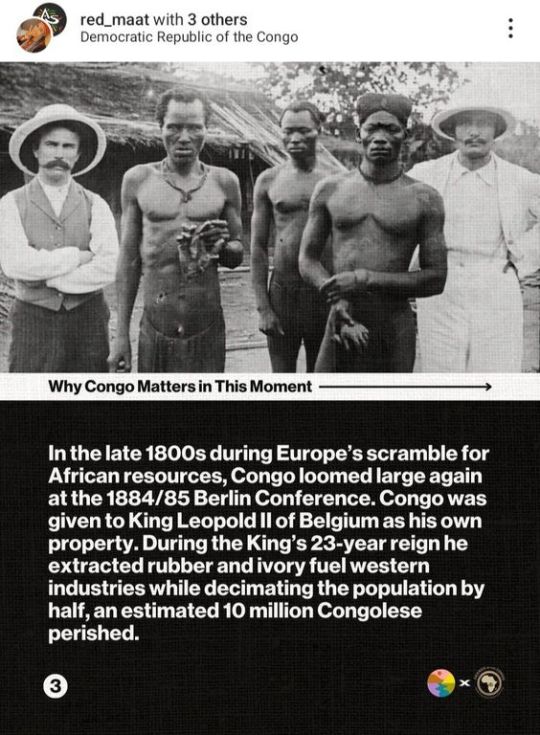
9 notes
·
View notes
Text

"She [Princess Charlotte Augusta of Wales] fixed upon Prince Leopold, say the English who are here, by her own free choice alone; and she loudly declared that she expected to be happy, because she had listened to no guide but her own heart. The prince [Leopold of Saxe-Coburg-Saalfeld] pleased her mightily.”
"I can easily believe it,” observed the emperor [Napoleon Bonaparte]; “for if I remember rightly, he was the handsomest young man I saw at the Tuileries.”
24 notes
·
View notes
Text
"Although the precise numbers are unclear, thousands of children were affected by the policy of forced removals and segregation during Belgium’s decades-long rule over the territories of the modern-day Democratic Republic of Congo, Rwanda and Burundi.
The system had its origins with Belgium’s King Léopold II, who ruled Congo as his personal fiefdom from 1885 until 1908, when the territory was ceded to the Belgian state. The removals policy was updated in 1952, even after the legal concept of crimes against humanity was established after the horrors of the second world war."
#belgium#class war#democratic republic of the congo#rwanda#Burundi#king leopold#King Léopold II#world war ii#world war 2#world war two#ausgov#politas#auspol#tasgov#taspol#australia#fuck neoliberals#neoliberal capitalism#anthony albanese#albanese government#antinazi#antizionist#anti monarchy#fuck the monarchy#eat the rich#eat the fucking rich#anti capitalism#antifascist#anti colonialism#anti colonization
4 notes
·
View notes